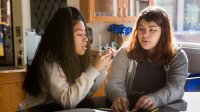3 Ways Students Can Pursue Clarity Through Collaboration
Clear understanding doesn’t come from a teacher’s presentation of information—it evolves through students figuring out what they are learning, together.
Your content has been saved!
Go to My Saved Content.There is a myth that providing straightforward information produces high levels of learning within students. However, research has shown that teacher clarity does not necessarily equate to students’ clarity of expectations—in a given task, students may be confused by the requirements of the task, its context, and targeted learning standards.
Students need to be clear about our expectations of them, especially when we assess their learning. This means being explicit about the goals we expect them to reach, clearly stating their current levels of performance and identifying the steps they need to take while immersed in a learning task. Ideally, we should try more often to put them in circumstances where they search for clarity. These may be one of the most important things we do for our students.
Now, clarity has a considerable influence on student learning. When students are clear on expectations, research shows that student learning may double in one year. Even those who do not agree with the methodology of these studies agree that clarity is important. Yet, how students gain clarity is mostly driven by conventional thinking about instruction: that if we present our expectations, build better rubrics, and have students recite outcomes, they will understand our expectations.
However, transparency doesn’t yield clarity. Clarity doesn’t come from presentation; it evolves. Students don’t just “see” clarity—they create it. It evolves through students figuring out what they are learning, together.
The New Model of Creating Clarity: Student-centric
Our brains are designed for sense-making. As science writer Annie Murphy Paul states, we are “pattern-recognition machines,” and one of the best ways to make sure our machines (brains) work is to actively explore contradictions, engage with complex material, and discuss ideas and concepts before someone rushes to tell us the answer. Students need to grapple with complex and contradictory information to develop clarity.
The pursuit of clarity requires teachers to allow students space and opportunity to collaborate. Students need shared experiences that are often vague, are too complex to solve initially, and/or posit different perspectives or paradoxes. Here are a few strategies to consider when supporting students in pursuit of clarity.
3 Strategies to Promote Collective Confusion and Clarity
1. Wicked problems: Provide students with what David Epstein calls “wicked problems”—ones where the rules of the game are often unclear or incomplete, there may or may not be obvious or repetitive patterns, and feedback is delayed.
For example, instead of sharing with students that they are learning about central tendency (median and mode) and spread (interquartile range and standard deviation) of two or more different data sets, with a well-developed rubric, a teacher shares a real-world problem. In this case, housing prices have exploded in so-called Zoom towns during the pandemic and are now falling in those same areas due to the changes in business practices (i.e., people are heading back to the office).
The teacher then asks the students to discuss with others what they might be learning about in this unit. During this time, the students are probably confused but working hard with others to make sense of the question in front of them.
Teachers best support students’ learning not by telling them the “right” answer but by allowing them to figure it out. Students engage in sense-making struggles to help them yield clarity, and such activities have staying power over the next several days and weeks.
Consequently, the projected outcome of wicked problems is threefold. First, students will develop a higher degree of clarity. Second, students will have experienced transfer-level activities that will likely support them in future transfer-level tasks. Third, they will experience deep-level learning through classroom discussion, evaluation, reflection, and seeking help from peers.
2. Micro Project-Based Learning: Provide students with a real-world problem that pertains to the core content standards they will be learning. Ask them to attempt to solve the problem using the following process: prompt, predict, and present. For example, prompt students to contemplate to what extent vaccination rates can be influenced by how we convey data. Next, ask students to predict how to address the problem (improving vaccination rates) by providing what they think are the best solutions. Finally, ask students to present their answers.
Afterward, ask students to reflect on their experience, using the following prompts:
- What was the most challenging?
- What do you think you are missing in your understanding of the problem?
- What more do you want to know?
Finally, after the entire unit is complete, ask students to revisit their micro-projects, reflecting on the changes they made on both their initial project and their revisions. The process of comparing their learning and measuring their progress is a hallmark of developing self-assessment capabilities, one of the most influential variables on student learning.
3, Matrix launch: Provide students with two or more situations that relate to the core content that they are about to learn, and then ask them to identify the underlying relationship between the two situations.
For example, imagine that you gave students data comparing home prices, vaccination rates, achievement data, and baseball statistics. Then ask students to identify the similarities and differences between the various contexts. Students would work together to spot the differences between each context and identify ways these variables could be related. By using a tool such as a Venn diagram, students would show that they understood the similarities, differences, and relationships between the variables, and in so doing, they would evince analytic and associative thinking.
Students’ best learning can occur when we don’t situate them as passive recipients of our explanations. To truly learn, they must be active, doing things such as searching for patterns, refining their ideas, reflecting on how they arrive at their answers, and, most of all, collaborating with others.
